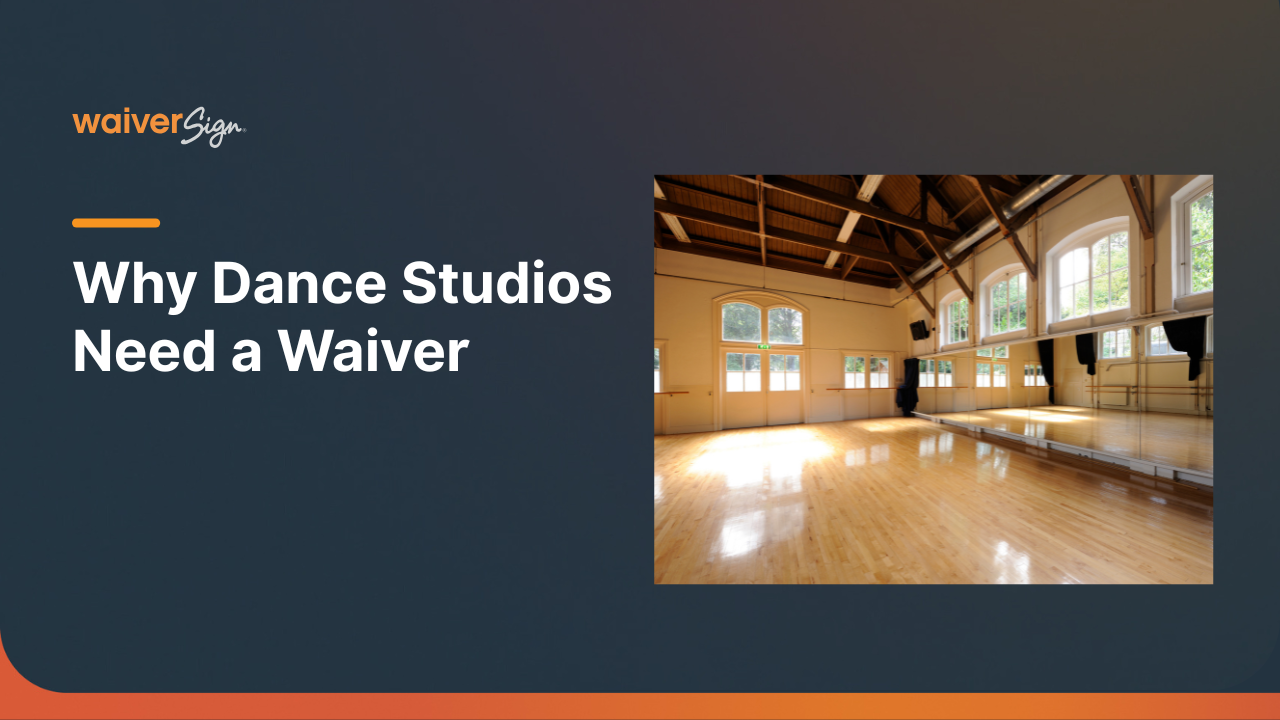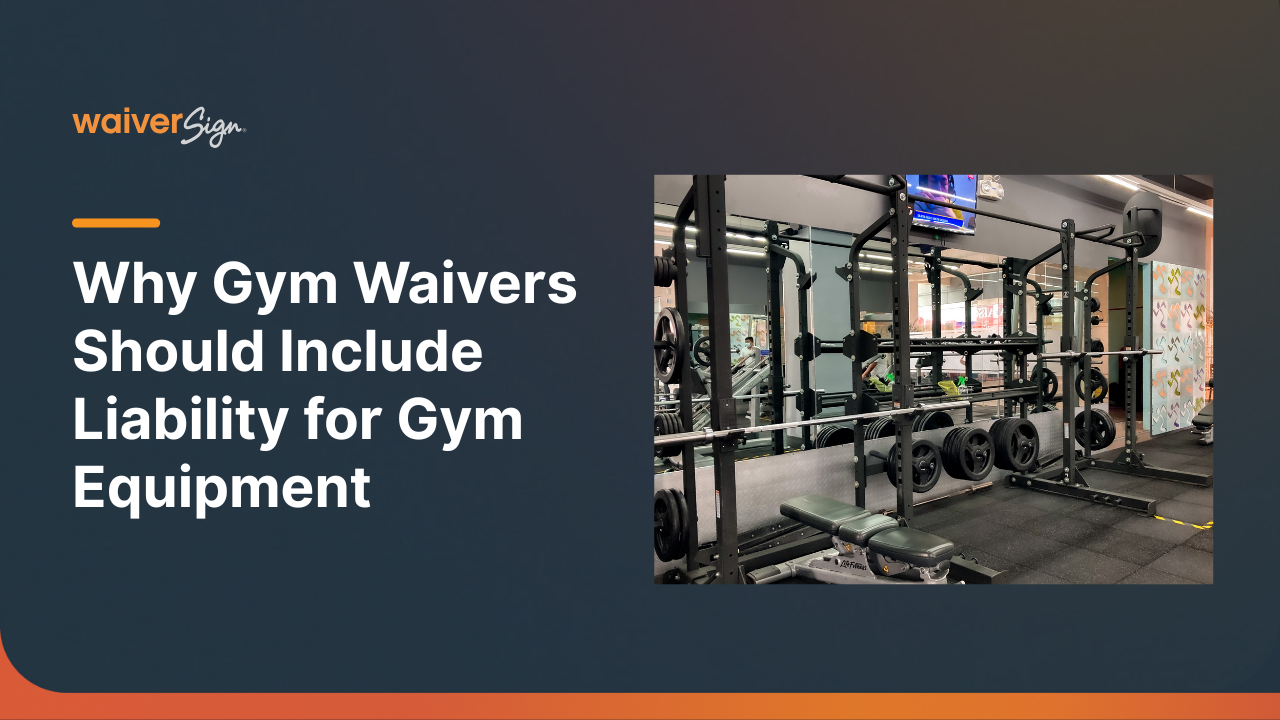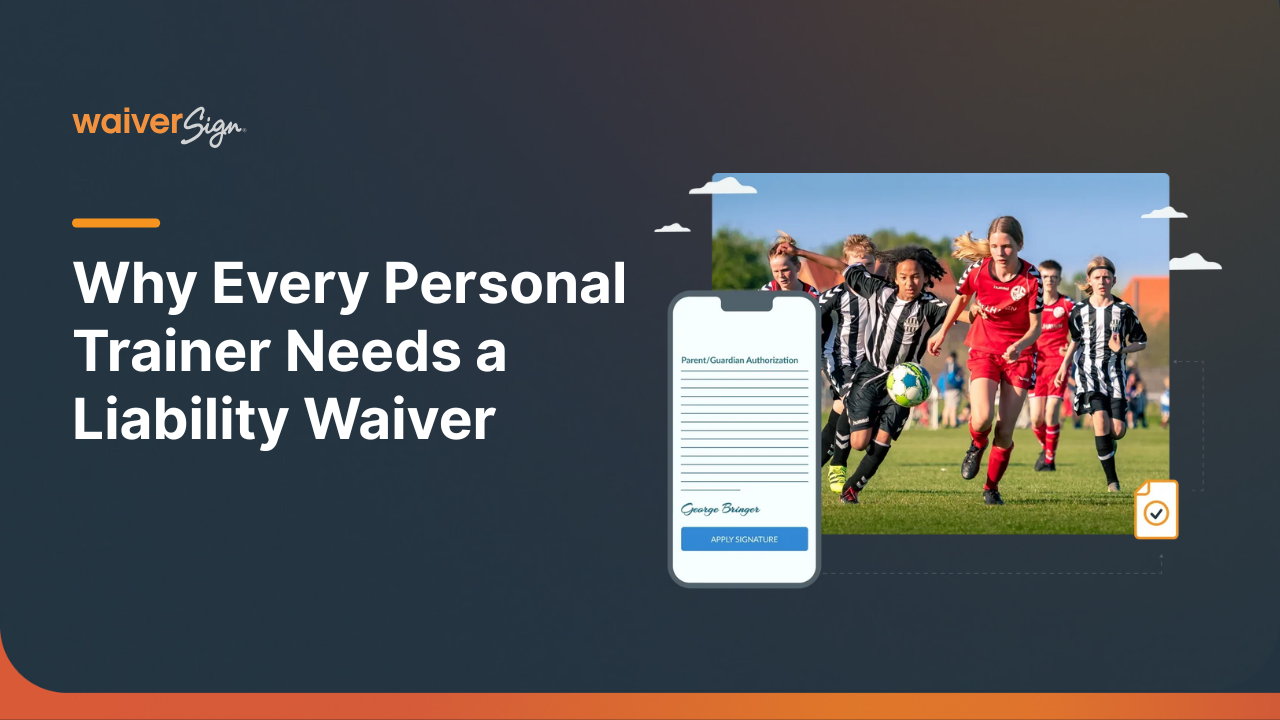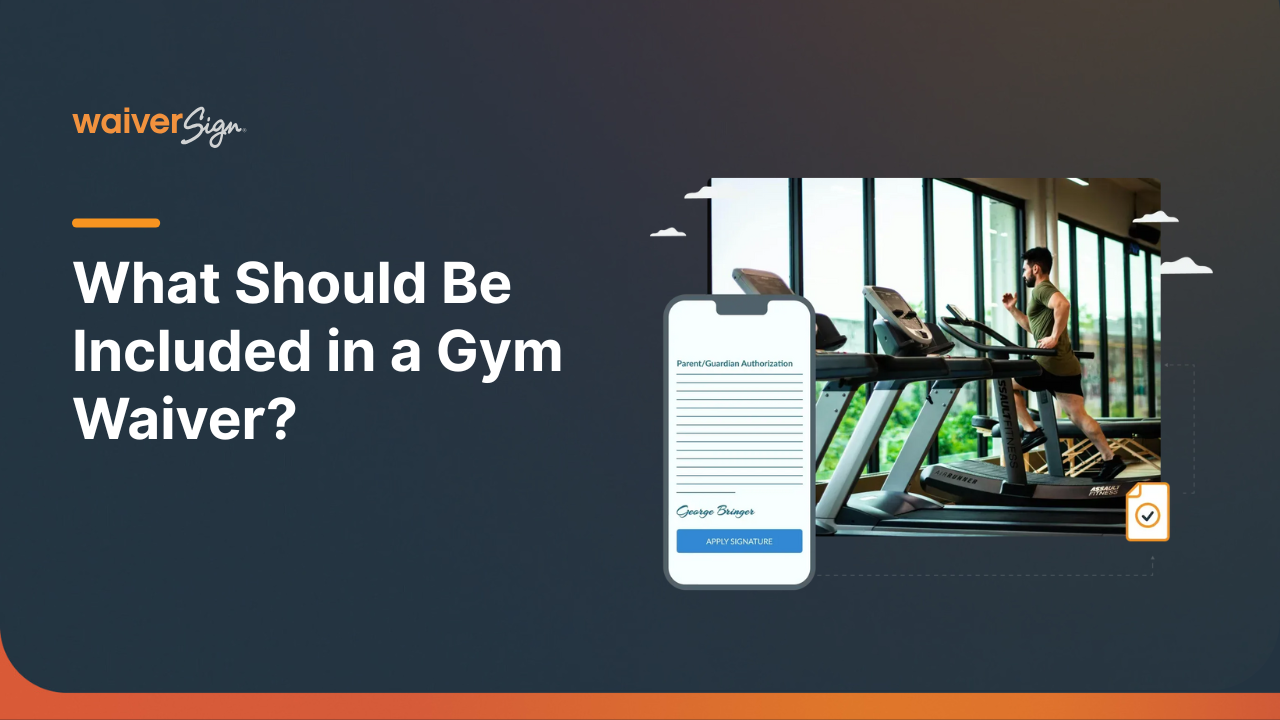Why Dance Studios Need a Waiver
Nikki DeSantis
Why Dance Studios Need a Waiver
Running a dance studio is about more than teaching choreography or perfecting technique. It’s about creating a safe, welcoming space where dancers of all ages can move, express themselves, and grow. But with every plié, pirouette, or hip-hop jump, there are risks for both your students and your business.
That’s where waivers come in.
A good waiver doesn’t just protect your studio legally. It sets clear expectations, builds trust with families, and makes your operations smoother. Here’s why every dance studio should make waivers a regular part of enrollment.
The following information is meant for general education and should not be considered legal advice. Since every dance studio has its own unique circumstances, we recommend consulting an attorney when creating or reviewing your waiver.
1. Protect Your Business From Liability
Accidents happen, even in the most careful environment. Slips, falls, twisted ankles, or injuries during performances are part of the reality of dance. Without a waiver in place, your studio could be exposed to costly legal claims.
A waiver creates a record that students and parents understand the risks involved in dance and agree to participate responsibly. It won’t remove risk completely, but it adds an important layer of protection for your business.
Want to see what this looks like? Check out this example dance studio waiver.
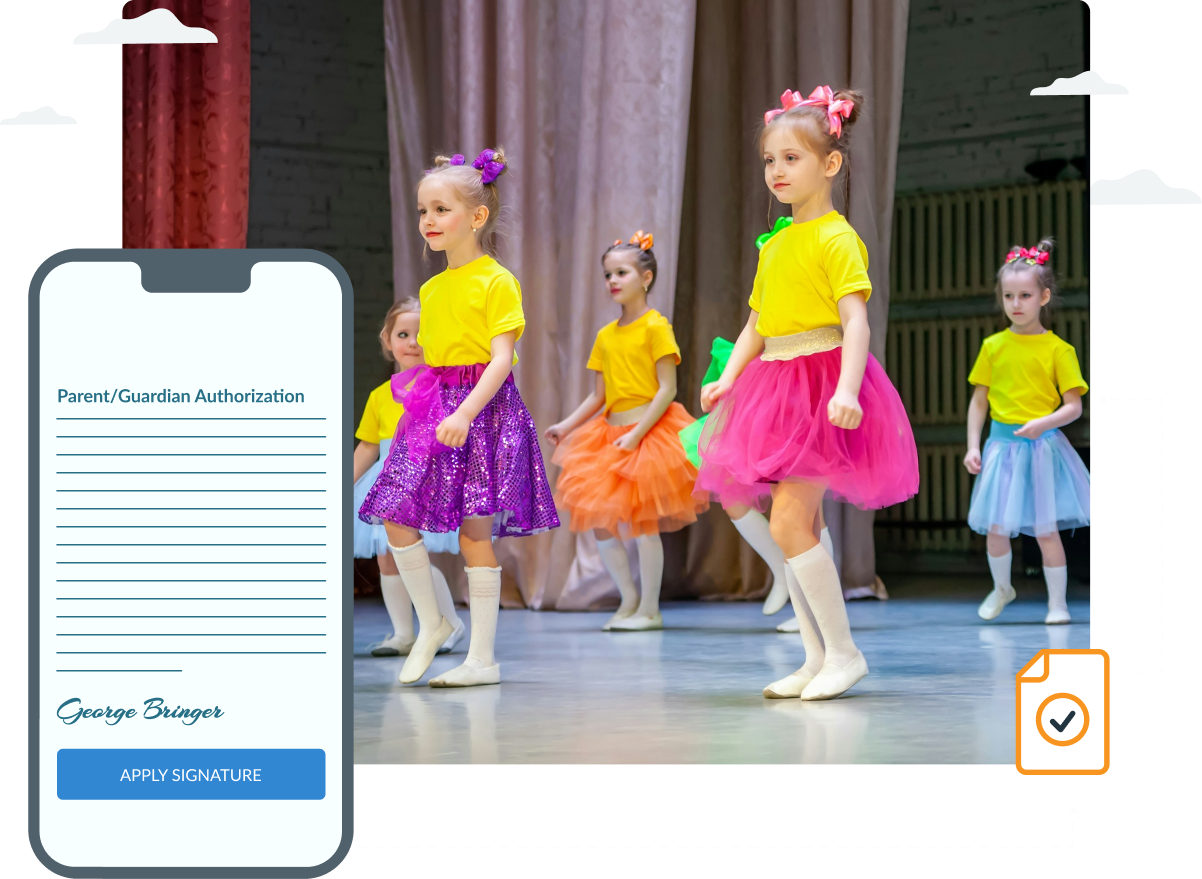
2. Set Clear Expectations With Students and Parents
Waivers aren’t only legal documents. They’re also great communication tools. A clear waiver outlines:
- The physical risks of dancing
- Safety rules students should follow
- Studio policies around injuries, behavior, or refunds
When expectations are written down, there’s less room for confusion later. Parents, especially, appreciate this transparency. It shows you’re organized and professional, which builds confidence in your studio.
3. Support Insurance and Compliance Requirements
Many insurance providers ask for waivers as part of their coverage. Having a signed waiver on file shows that you’re taking reasonable steps to protect both your students and your studio.
This can help with compliance, improve your standing with insurers, and give you peace of mind knowing you’re covered.
4. Collect Helpful Student Information
Digital waivers can do more than capture a signature. They also let you gather important student information in one safe place, such as:
- Emergency contacts
- Medical considerations like allergies or past injuries
- Consent for photos or video recording
- Acknowledgement of studio rules
Having this information organized and easy to find keeps students safer and helps your team respond quickly if something comes up. With WaiverSign, you can pull up this data in seconds instead of digging through paper files.

5. Save Time With Digital Waivers
Paper forms are inconvenient for busy parents and a hassle for staff. They’re easy to lose and take up storage space.
Digital waivers solve these problems. Parents can review and sign from any device before their child even steps foot in the studio. For staff, that means no more lines at the desk, no messy stacks of paper, and instant access to signed forms when needed.
Check out our dedicated dance studio waiver solution to see how simple it can be.
6. Show Professionalism and Build Trust
When new students walk into your studio, they’re deciding if they can trust you with their time, money, and often their children’s safety. A professional, mobile-friendly waiver shows that you take that responsibility seriously.
It proves your studio is organized, reliable, and committed to protecting students. That level of professionalism can help you stand out from competitors who still use outdated paper forms or skip waivers entirely.
FAQs Dance Studio Waivers
Can a waiver fully prevent lawsuits against my studio?
No. A waiver cannot stop someone from filing a lawsuit, but it can provide strong legal protection by showing the student or parent understood the risks and agreed to them.
Do waivers only cover injuries during class?
Not necessarily. Many studios extend coverage to performances, recitals, competitions, and even travel if applicable. Your waiver should reflect all the activities your students might be involved in.
Can I include media and photo release in the same waiver?
Yes. Many studios combine liability, policy acknowledgment, and media release into one document to simplify the process for parents.
What happens if a parent signs electronically but disputes it later?
Digital signatures are legally valid and include a digital trail (such as timestamp, IP address, or email). This creates stronger evidence than paper forms in many cases.
Do waivers need to be updated every year?
Yes, that’s considered best practice. Regular updates ensure your waiver reflects any new policies, insurance requirements, or added classes like aerial or acrobatics.
Can instructors or staff also sign a waiver?
Yes. Many studios ask staff, instructors, or guest teachers to sign waivers or contracts that include liability acknowledgment to cover all participants in the studio environment.
How long should I keep signed waivers on file?
Most studios keep waivers for several years, even after a student leaves. The exact length can depend on local regulations and your insurance policy, but digital waivers make long-term storage simple and secure.
Make Waivers Part of Your Studio’s Growth
Dance is joyful, empowering, and transformative. For your studio to thrive, you need systems that protect your business and support your students. A waiver is one of the simplest tools to make that happen.
With WaiverSign, you can create branded, mobile-friendly waivers in minutes. Students and parents can sign from their phones, tablets, or computers. No paperwork. No clutter. Just peace of mind.
Try WaiverSign risk-free. Start your free trial today.

See If WaiverSign Works For You
Don't wait to make the next step in streamlining your business.

